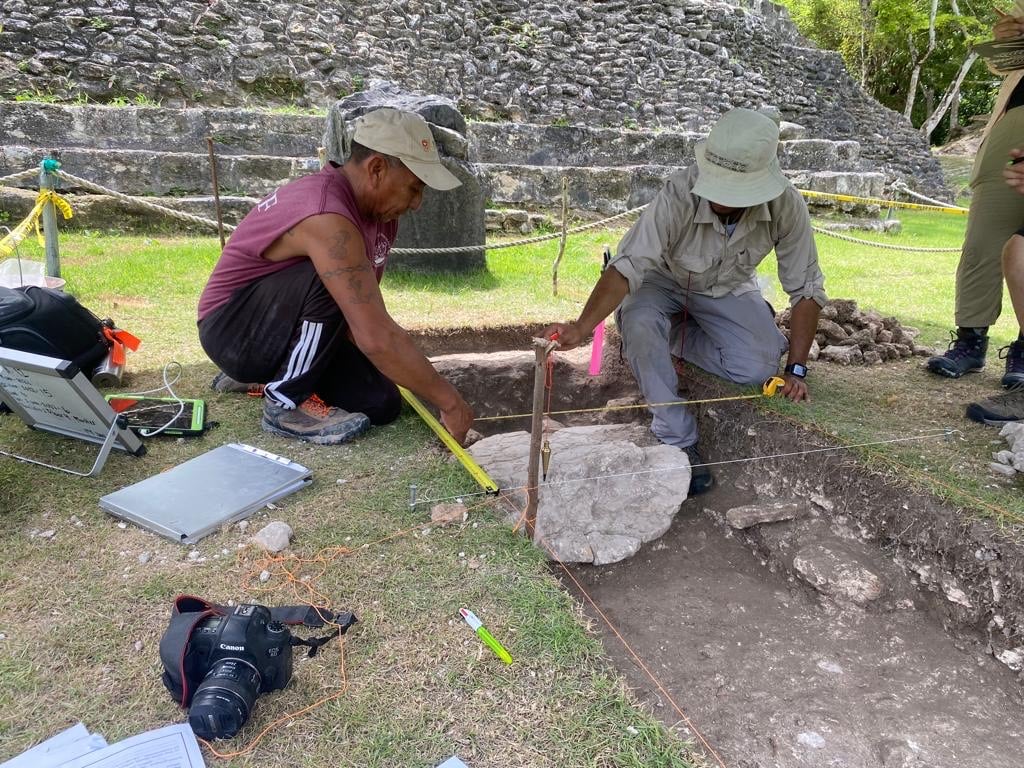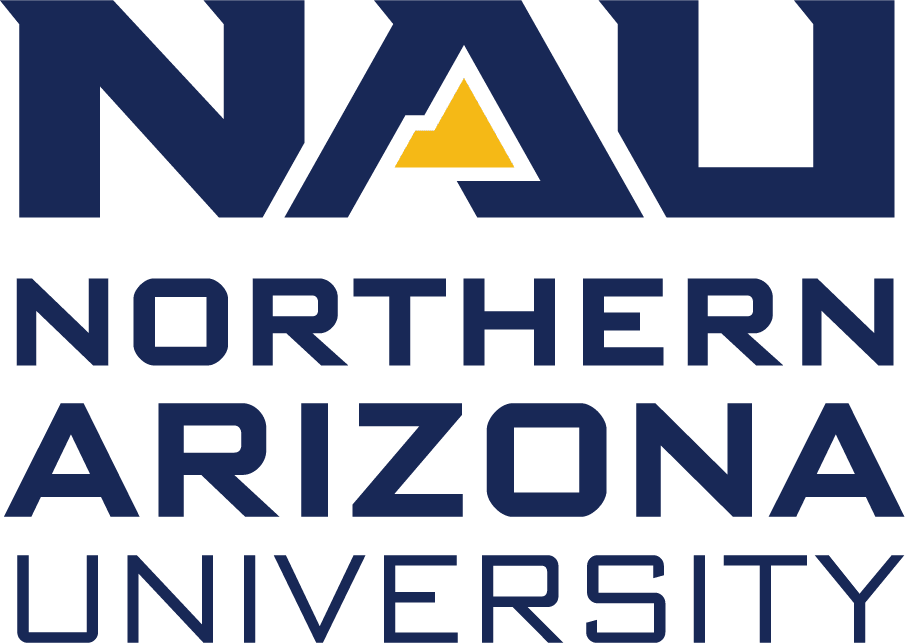Belize is a popular site for archaeologists. Despite that, the tiny Central American country still holds more questions than answers.
Estevan Ramirez found himself curious about those questions when he was a child in southern California. Enamored with the complexities of the Maya, he took his first archaeology class in junior college and knew he’d found his career path. And the opportunity to explore those complexities led him to NAU, where he is starting his final semester before earning a master’s degree in archaeology. His work this semester will include a different take on anthropology—approaching the U.S.-Mexico border from an anthropological standpoint.
He also gained about half a dozen mentors in the field, took on leadership opportunities, conducted research, found many ways to honor his heritage and committed to make archaeology a more diverse and inclusive space.
“As I continue my archaeological career, I plan to undertake the role of being an advocate that promotes more inclusion within the American archaeological academic system,” Ramirez said. “It is only through further inclusion and encouragement that real change can occur within the discipline of archaeology.”
 Preclassic Maya research
Preclassic Maya research
Ramirez’s first foray into research was at the University of California Riverside with the El Palmar Archaeological Project. One of his mentors, Kelsey Sullivan, was a former grad student with archaeology professor Jaime Awe and recommended NAU’s graduate program. He applied and not only was accepted but also received the Ray A. Madden Scholars in Anthropology Award, which provided financial aid for his degree program.
His thesis research focuses on the site core of the Classic Maya site of Xunantunich origin; this is a site of cultural complexity that, despite all the archaeological research taking place, the site’s earliest phase of occupancy has remained largely unexplored in a systematic and focused manner. He investigated the phase of occupancy known as the Preclassic era (1200 BCE to 300 CE). During the 2022 field season with the Belize Valley Archaeological Reconnaissance Project, he conducted a series of excavations to understand the development of Xunantunich during Preclassic times.
“For Maya studies, establishing this chronological phase of occupancy is significant because finding continuity through various examples of inhabitance supports the notion that the ancient Maya tended to revisit site cores,” Ramirez said. “Furthermore, the ancient Maya continued to develop the power of sacredness within the landscape through dynamic trends of architectural manifestations that reflect Maya ideology dating back to the civilization’s initial rise of cultural complexity.”
Awe, who is Ramirez’s master’s adviser and chair of his thesis committee, found a kindred spirit in Ramirez—they were both first-generation Latinos with a commitment to achieve their dreams, a passion for archaeology and, of course, a love of soccer (fútbol). Ramirez accompanied Awe to Belize in the summer to do his master’s research, and he returned in the fall to finish analyzing artifacts, complete a drone survey at Cahal Pech and train members of the Belize Institute of Archaeology on the use of photogrammetry in archaeological research.
“He arrived in Belize just after Hurricane Julia had worked its way through Central America, and because of the severe flooding of the Mopan River, Estevan was unable to get to Xunantunich,” Awe said. “Refusing to be defeated by the forces of nature, the drone survey and training program was moved to another site that remained accessible. Estevan returned to Belize over the winter break so he can complete the analysis he was unable to do in October. This is all testimony to his perseverance, resiliency and generosity.”
A different kind of archaeology
Humans leave evidence of their existence everywhere they were. Most archaeology examines this evidence from centuries or millennia ago. While working for a cultural resource management firm on an archaeological survey in Yuma, Ramirez came upon a much more recent human story that demanded to be told. It was summer 2020, scorching hot, in the midst of a pandemic. At the U.S.-Mexico border, he experienced the harsh realities of what it takes to seek a better life in a foreign place.
“The desert is a beautiful but ominous place where many untold stories settle on the surface from the items left behind during these journeys,” he said. “Some items have been weathered from long exposure to the sun over the years, and others appear brand-new as if they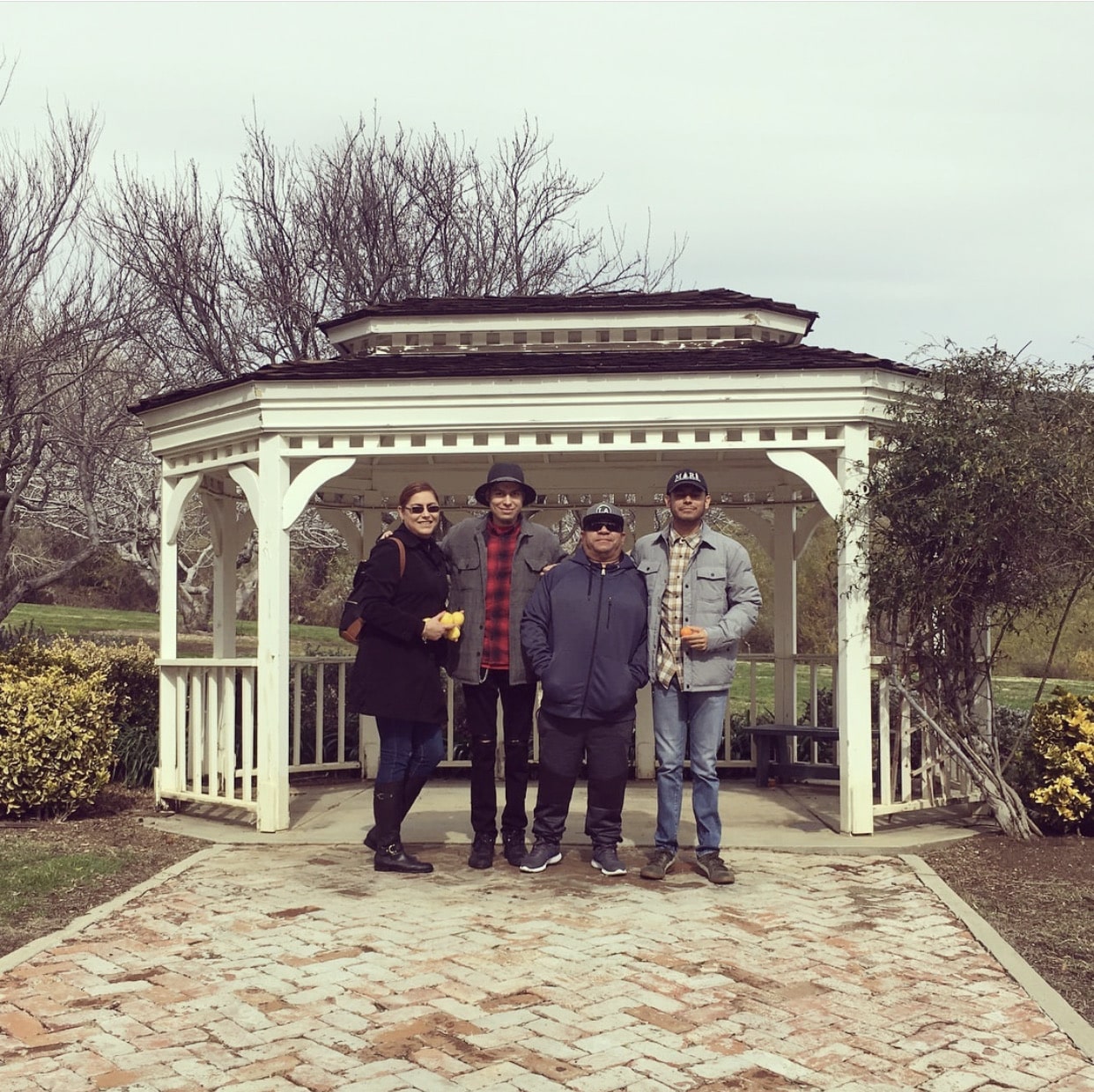
These stories are not unfamiliar. Ramirez’s father immigrated from Villa Guerrero in Jalisco, Mexico, when he was 16 years old. He wanted a better life. Growing up, Ramirez heard stories about this journey.
“It was truly an unsettling time as I would visualize in my mind the exact journey my father and his siblings went through,” he said. “Shout out to immigrant parents who came here with nothing but gave us everything.”
During his time here, he met Leah Mundell, an associate teaching professor of anthropology who does community-centered research at the border and with border communities. This semester, he will work as a graduate assistant for Mundell’s Global Migration and Human Rights class, which brings students to the southern border and engages with local immigrant rights and humanitarian aid groups.
“What I experienced in Yuma was a life-changing and impactful time for me,” he said. “I now have the opportunity to learn more and inform others of how adopting an anthropological approach may supplement efforts to challenge the standing policies and improve the living conditions for all migrants who left their home countries by choice or by force.”
For Mundell, Ramirez’s personal commitment, as well as his different take on border issues, allowed her to create new academic and research opportunities for him and another grad student interested in these issues.
“He came to me last year anxious to process his powerful experience encountering border crossers and Border Patrol at an archaeological survey site in Yuma, and his experience opened up a new interest in approaching immigration through an anthropological, and even archaeological, lens,” she said. “Estevan is challenging me to think more deeply about the connections between archaeology and cultural anthropology in migration studies and how we can more effectively build collaborations that impact border policies and humanitarian efforts.”
 His time (so far) at NAU
His time (so far) at NAU
Ramirez knew from his undergraduate experience the value of the support, mentorship and socializing a close academic community offers. He also came to NAU mid-pandemic, so opportunities for connection were harder to come by. He and some classmates decided to restart the Student Association of Graduate Anthropologists (SAGA), which helped foster a sense of community among grad students through academic workshops and social activities.
Emery Eaves, an associate professor of anthropology and the graduate program coordinator, met Ramirez in class. She was impressed with his leadership abilities and desire for greater connections in the program and mentioned the need for a SAGA revamp.
“He stepped up, along with two other students, to lead the students toward a stronger community than we’ve seen since I arrived in the department. He is a thoughtful student in classes and has gone above and beyond to create a sense of community among his fellow students.”
His efforts, which made the program better for all of its students, were just a trademark of who Ramirez is, Eaves said—humble, willing to contribute anywhere he could, interested in helping others. He is quiet but always working and helping, she said.
Ramirez didn’t always see himself that way; he said the hardest part about his time at NAU was the feeling of imposter syndrome. As a Mexican American first-generation student, he constantly felt like he didn’t belong, no matter how many successes he experienced. But he kept at it.
“I am proud of my heritage and recognize that the path to earning my master’s degree is an unpaved one, but I was eager to start and continue that journey,” he said.
The final semester and beyond
Ramirez spent the second half of December in Belize, making up for the earlier trip that went sideways after the hurricane. He completed analyses for all the artifacts records from the units that were excavated during the summer and collaborated with members of the Belize Insitute of Archaeology to do a drone survey at Xunantunich, along with photogrammetric documentation of structures. Both drone surveys conducted at Cahal Pech and Xunantunich assisted in helping the team produce 3D models of the site cores and visualize the locations of previous units excavated by archaeologists.
“3D modeling has allowed archaeologists to record and analyze the past accurately and efficiently,” he said. “Both aerial and object photogrammetric documentation methods are extremely useful to obtain data related to landscape use patterns and to preserve the archaeological record through noninvasive means in order to understand how individuals of the past interacted with the environment over time. Among many of the other benefits 3D modeling provides, creating interactive representations of the data for public outreach and educational use is an excellent example of its endless capabilities.”
With the semester starting, Ramirez is moving into writing and presenting his thesis, in addition to Mundell’s Global Migration and Border Policy course. After graduating in May, he will find field work as an archaeological technician while also applying to doctoral programs in archaeology.
From there, he hopes to one day teach at a community college. He was once a community college student, and that experience set him on the course he’s on today. He wants to make sure every student has the same opportunities he has had.
“I have been very fortunate to participate in a large-scale archaeological project during my time at NAU,” he said. “This experience has allowed me to gain an understanding of how projects are organized, research questions are produced and how important it is to collaborate with the public and descendant community. I can build off a strong foundation in methodology, literature and collaboration and apply it to a project that I will direct in the future.”
Heidi Toth | NAU Communications
(928) 523-8737 | heidi.toth@nau.edu
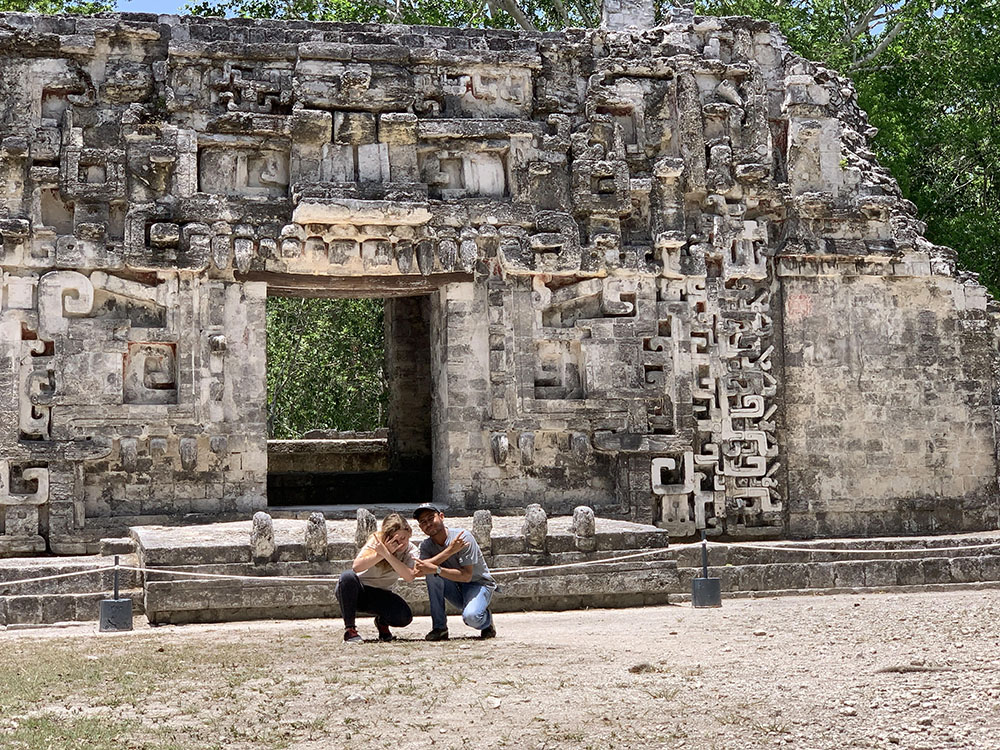



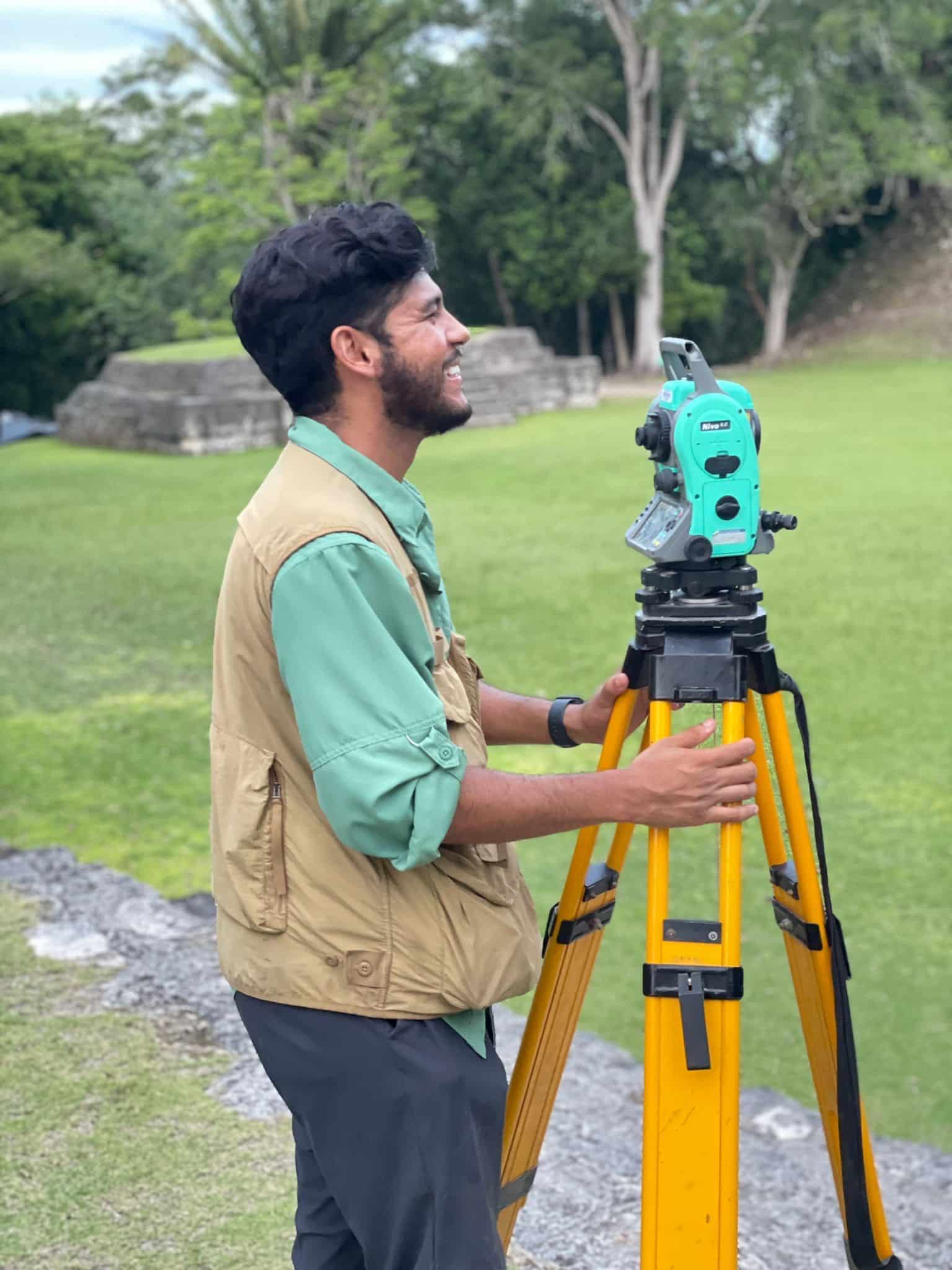 Preclassic Maya research
Preclassic Maya research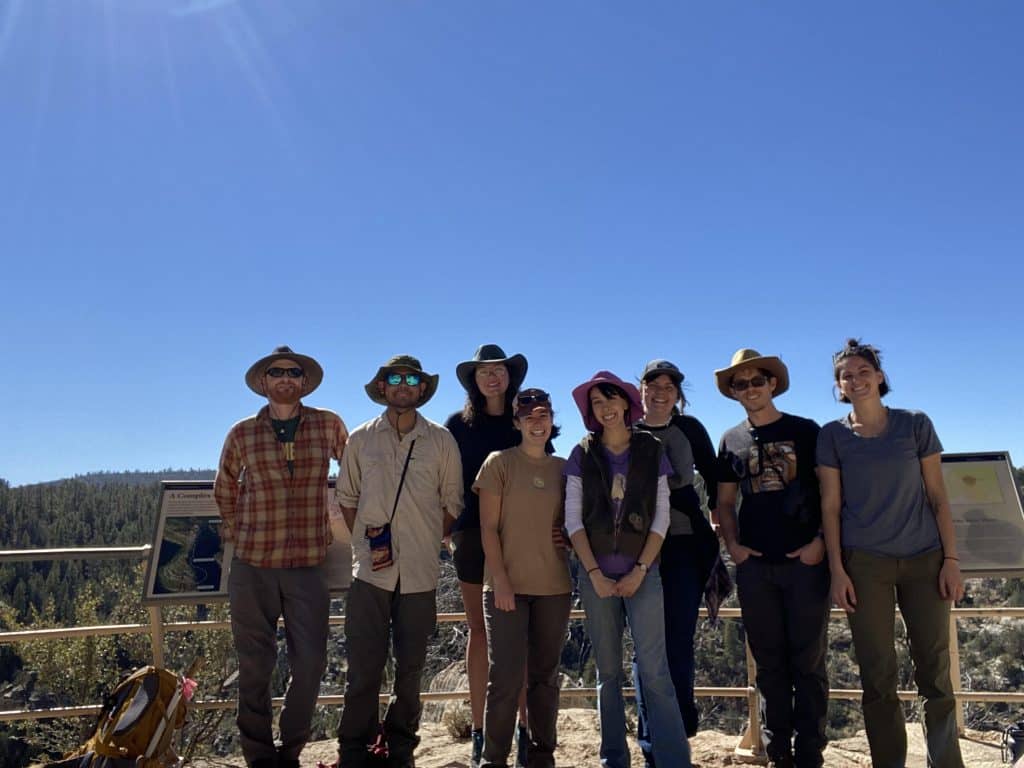 His time (so far) at NAU
His time (so far) at NAU